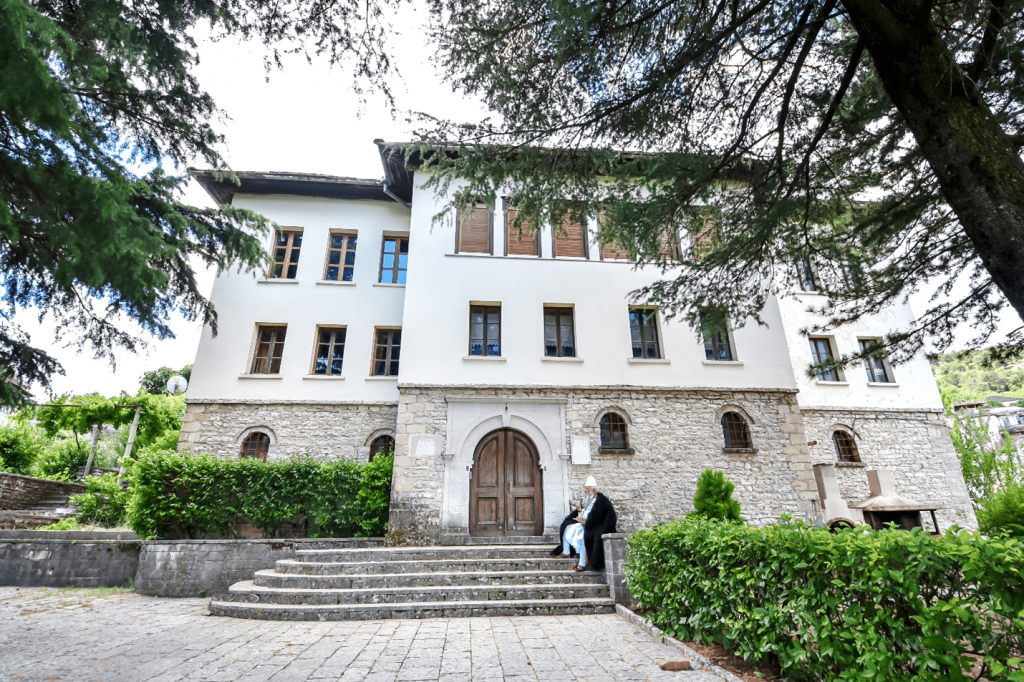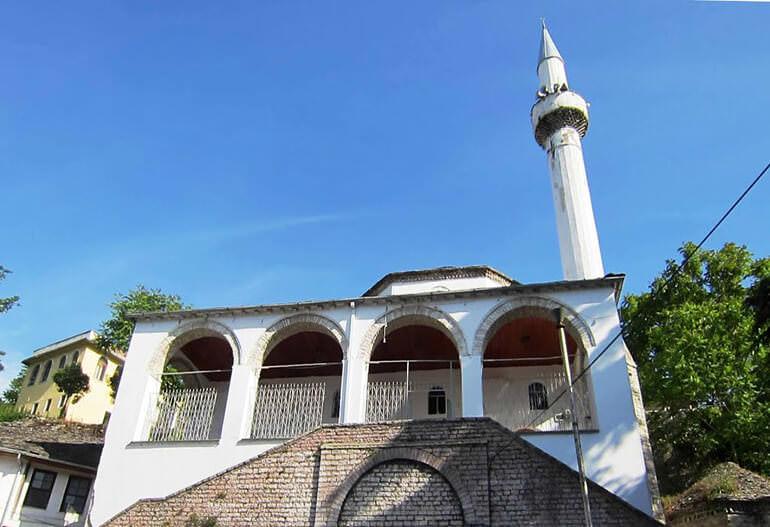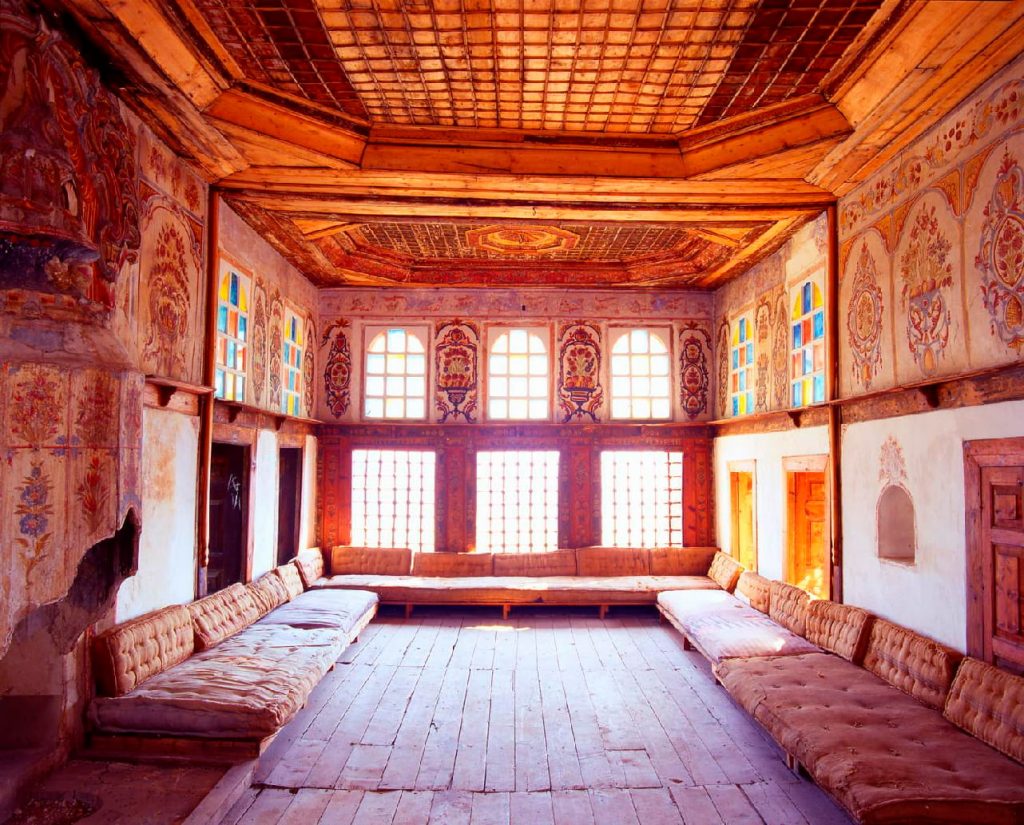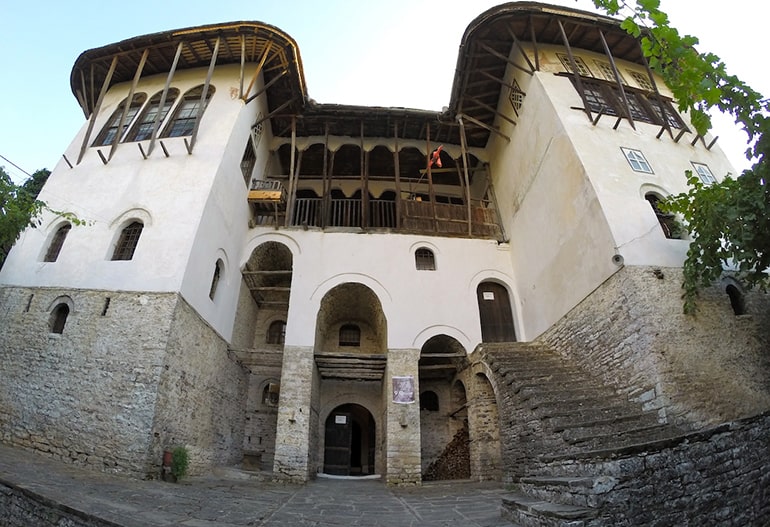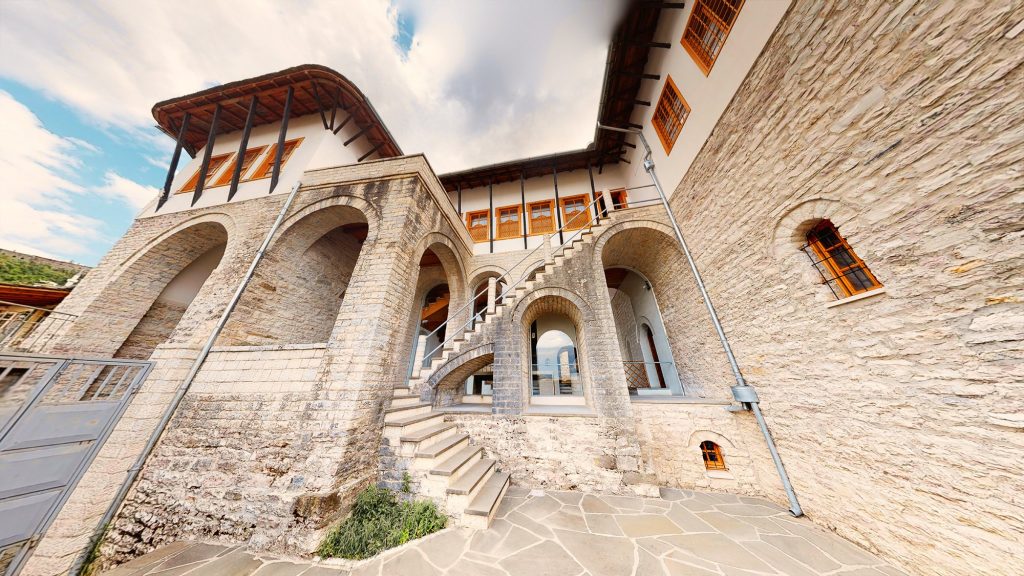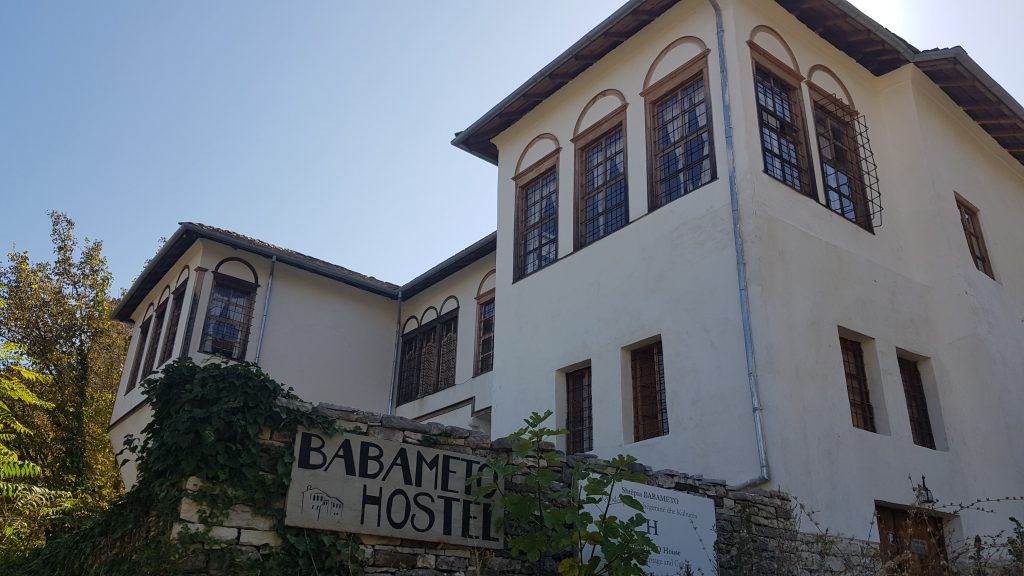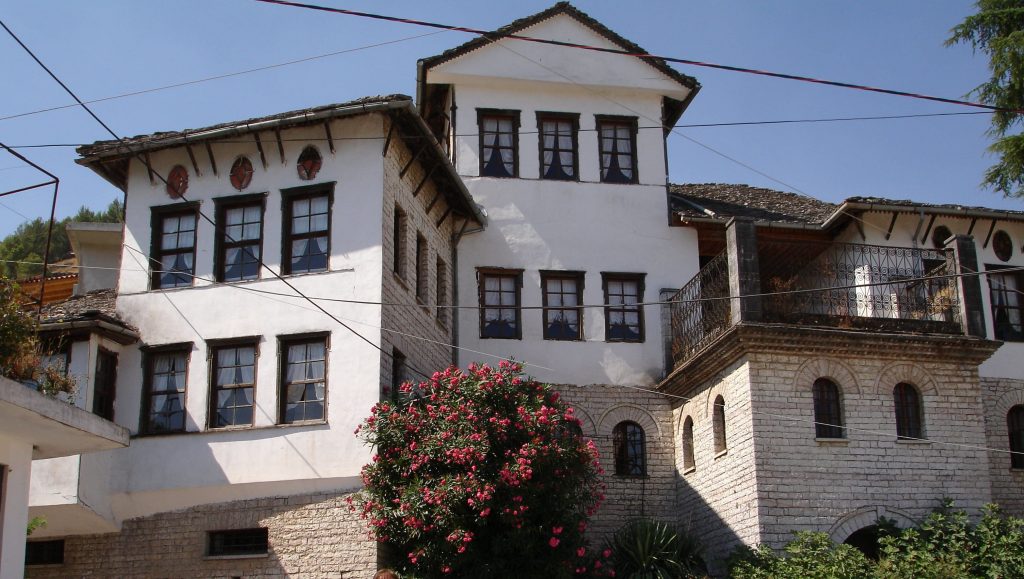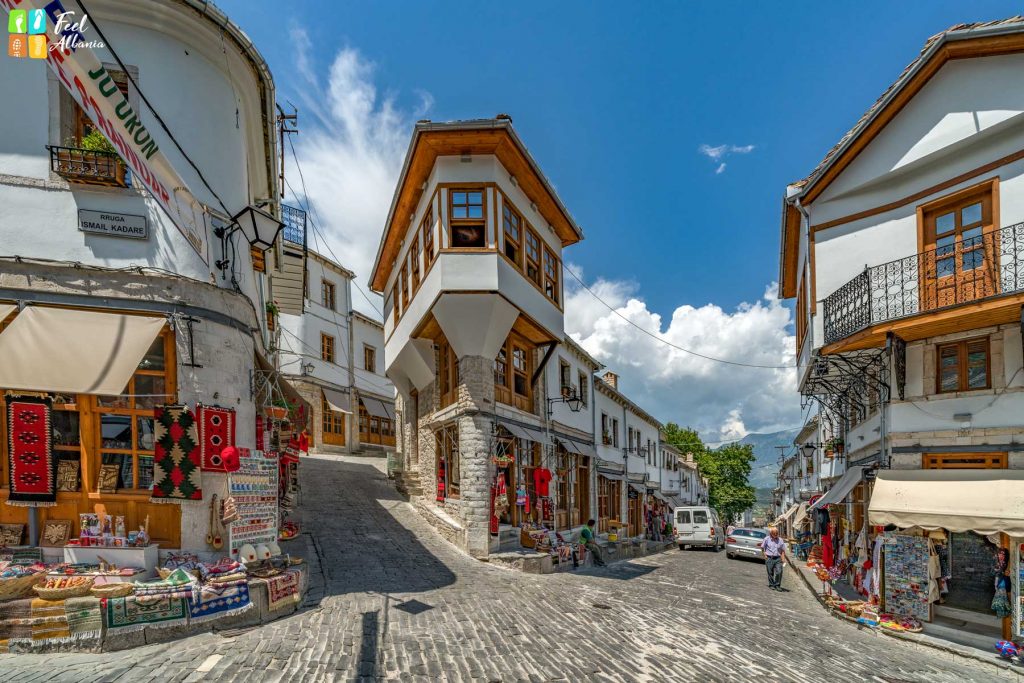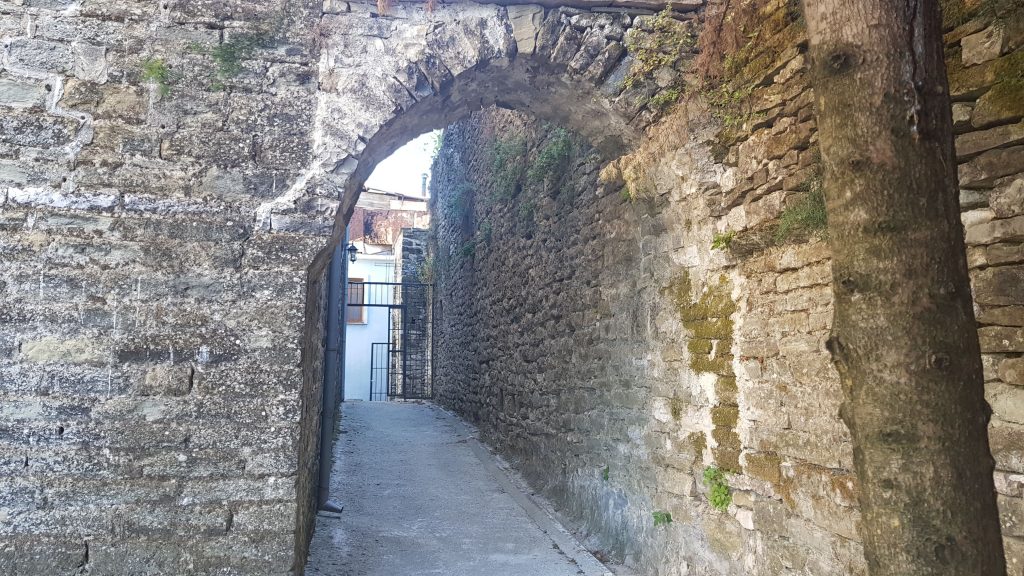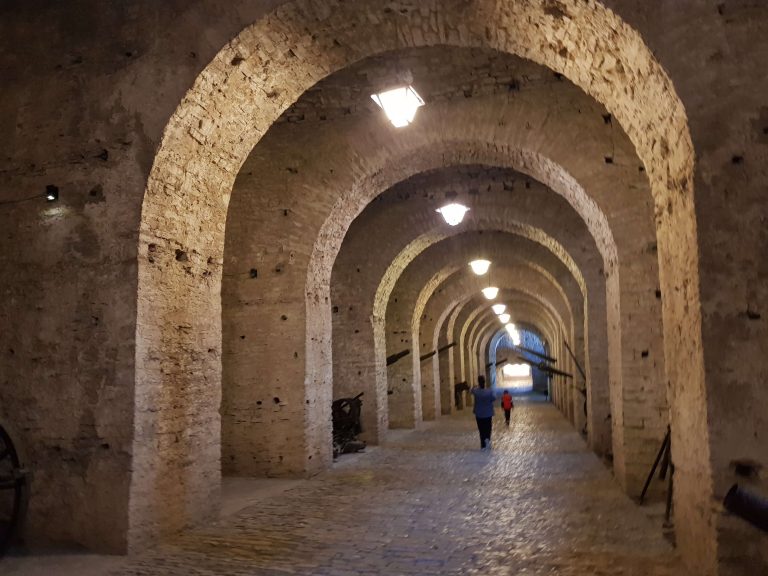Gjirokastra city, Albania
Cerciz Topulli House
Çerçiz Topulli’s house is one of the first private houses built outside the city castle. Topulli’s family, known as the defenders of freedom, have always been targeted by Albania and Albanians’ enemies. This is why the Topulars’ dwelling once resembled more like a small castle. Like any castle, it has received many blows in the...
Bazaar Mosque
The Bazaar Mosque, also known as Memi Bey Mosque, is located in Gjirokastër, Albania. Re-built in 1757 it is located in the Bazaar neighborhood. The mosque was originally designed to be located in the New Bazaar neighborhood of Gjirokastër, as part of Memi Pasha’s urban plan that was built in the 17th century including fifteen...
Zekate House
The Zekate House is located in the highest point of Palorto neighborhood. It was built around 1811-1812 for an accountant called Beqir Zeko during Ali Pasha’s rule. The majestic appearance of the building is the symbol of the elites of the time. The Zekate House is a particularly grand example of the typical kullë (tower-house). This...
Skendulaj House
The Skenduli house sits next to the Ethnographic Museum. It has been around for more than 300 years according to the owners. Exceptionally well-preserved, the tall building stands on traditional stone foundations that reach the height of the first-floor windows. The interior is impeccably designed and illuminated, and the house boasts a total of nine fireplaces...
Kadare House
The house was first built in 1799, and classified as a monument of culture of the first category in 1991. The house is related with the name of Ismail Kadare, the most famous Albanian writer worldwide. Kadare was born in this house in 1936 and spent his childhood here. Ismail Kadare has become the pride...
Babameto House
Babameto House dates back to 1885 and 1887 according to the two inscriptions on the two entrance doors. It belongs to Babameto Family which is one of the most distinguished families of Gjirokastra else referred to as “a big gate”. It is a 1st category Monument of Culture, since 1973, as nominated by the communist...
Ethnographic Museum
The Ethnographic Museum is located in the Palorto neighborhood. The late dictator Enver Hoxha claimed he was born in 1908 in the house upon the ruins of which the actual building was raised in 1964-1966. Up to today there is no evidence to prove this fact. The house was rebuilt as a model of the...
Gjirokastra’s Bazaar
The Bazar of Gjirokastra (Pazari) has been a market area since the ottoman times, that is, from the 17th century until the later reconstructions in the18th and the 20th century. Initial information about the Bazaar is found in Evlia Celebi records from the 17th century about all that was happening outside the castle walls). From 1944 till 1990’s...
Church of the Transfiguration of the Savior
Declared a Monument of Culture (1st category), in 1960s the Church of the Transfiguration of the Saviour (Kisha e Shpërfytyrimit, Shen Sotira) building dates 1784. It is also called the “Old Metropolis” (Mitropolia e Vjeter), as it once served as the seat of the local Orthodox bishop. It is located in the Old Bazaar/Market District...
Gjirokastra Fortress
The castle is one of Balkan’s biggest castles and undoubtedly one of the most magnificent structures of the city. Entitled Cultural Monument of the first category in 1948 the citadel extends across the 1100-foot-high hillside, like a giant ship made of stone dominating the town offering spectacular views of the strategically important route along the the Drino river valley...

